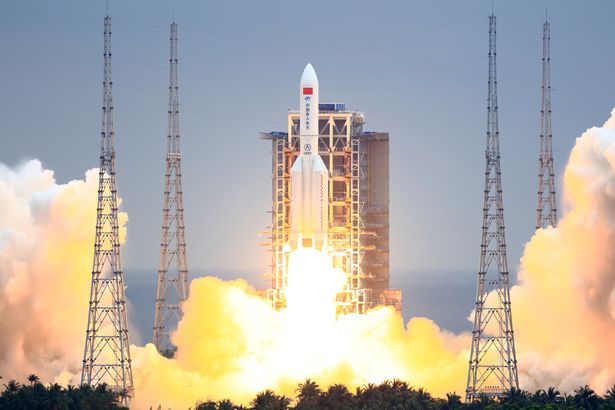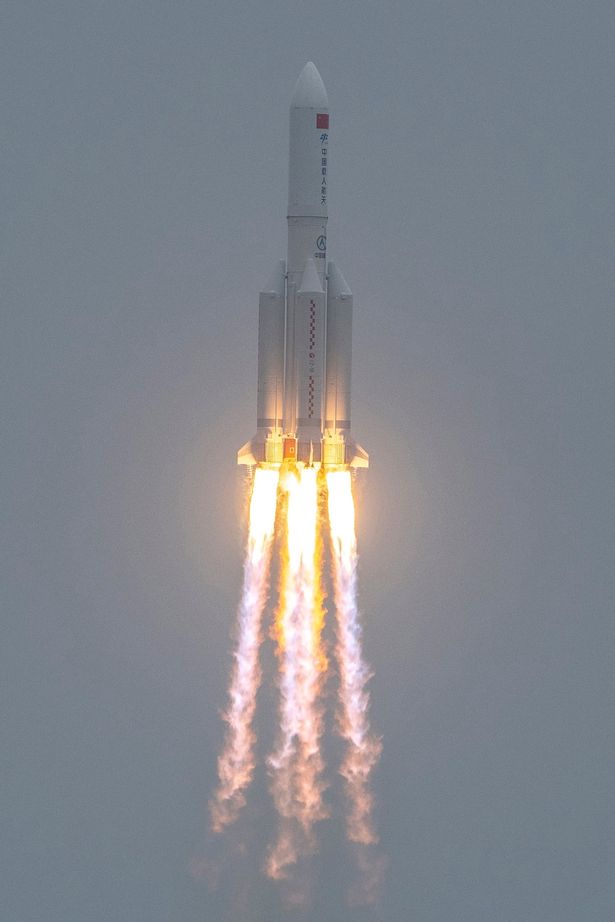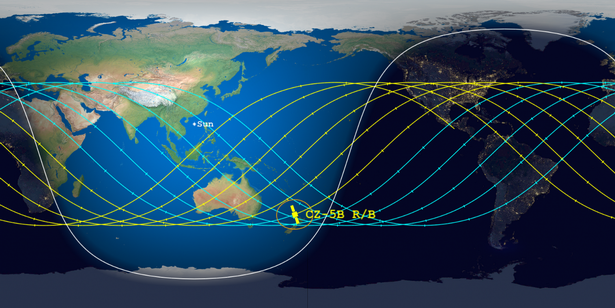Remnants of an out-of-control Chinese rocket weighing 18 tonnes have crashed back to Earth following a space mission.
There were fear that pieces of the Long March 5B rocket body could fall on populated areas during its free-fall through the atmosphere.
However it has been confirmed that the spaceship came down in the Indian Ocean, according to state media.
Parts of the rocket re-entered the atmosphere at 10:24am Beijing time (0224 GMT) and landed at a location with the coordinates at longitude 72.47 degrees east and latitude 2.65 degrees north, Chinese state media cited the China Manned Space Engineering Office as saying.
Earlier, experts had said it was too difficult to predict exactly where remnants of the rocket would end up or when it would make its uncontrolled re-entry.
China had tried to downplay fears that fragments could fall on populated areas, with its Foreign Ministry insisting that most debris would burn on re-entry and was highly unlikely to cause any harm.
The US military said the uncontrolled re-entry was being tracked by US Space Command, and it had no plans to shoot down falling debris.

(Image: VCG via Getty Images)
The Long March 5B – comprising one core stage and four boosters – lifted off from China’s Hainan island on April 29 with the unmanned Tianhe module, which contains what will become living quarters on a permanent Chinese space station.
It is one of the largest space debris to re-enter Earth, at 18 tonnes.
On Friday, the Aerospace Corporation said its Center for Orbital Reentry and Debris Studies (CORDS) said its latest “informed prediction” of the rocket body’s re-entry location was given near the North Island of New Zealand.

The Mirror’s newsletter brings you the latest news, exciting showbiz and TV stories, sport updates and essential political information.
The newsletter is emailed out first thing every morning, at 12noon and every evening.
Never miss a moment by signing up to our newsletter here.
However, it noted that re-entry was possible anywhere along paths covering large swathes of the globe.
In a blog post, the Aerospace Corporation said: “The Long March 5B re-entry is unusual because during launch, the first stage of the rocket reached orbital velocity instead of falling downrange as is common practice.
“The empty rocket body is now in an elliptical orbit around Earth where it is being dragged toward an uncontrolled re-entry.”

(Image: AFP via Getty Images)
Harvard-based astrophysicist Jonathan McDowell previously told Reuters there was a chance that pieces of the rocket could come down over land, perhaps in a populated area.
In May 2020, pieces from the first Long March 5B rained down on the Ivory Coast, damaging several buildings, though no injuries were reported.
Debris from Chinese rocket launches is not uncommon within China.

In late April, authorities in the city of Shiyan, Hubei province, issued a notice to people in the surrounding county to prepare for evacuation as parts were expected to land in the area.
The latest Long March rocket launched on April 29 was the second deployment of the 5B variant since its maiden flight in May last year.
The empty core stage has been losing altitude since last week.
But the speed of its orbital decay remains uncertain due to unpredictable atmospheric variables.
The Long March 5 family of rockets have been integral to China’s near-term space ambitions – from the delivery of modules and crew of its planned space station to launches of exploratory probes to the moon and even Mars.
The core stage of the first Long March 5B that returned to Earth last year weighed nearly 20 tonnes, surpassed only by debris from the Columbia space shuttle in 2003, the Soviet Union’s Salyut 7 space station in 1991, and NASA’s Skylab in 1979.


